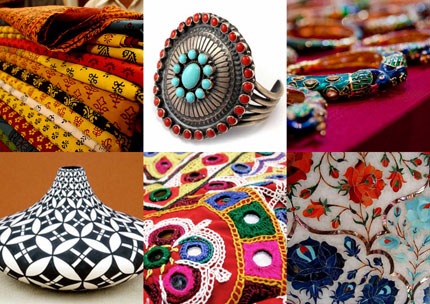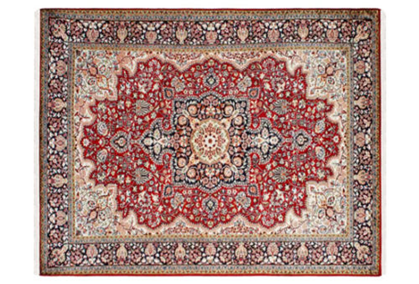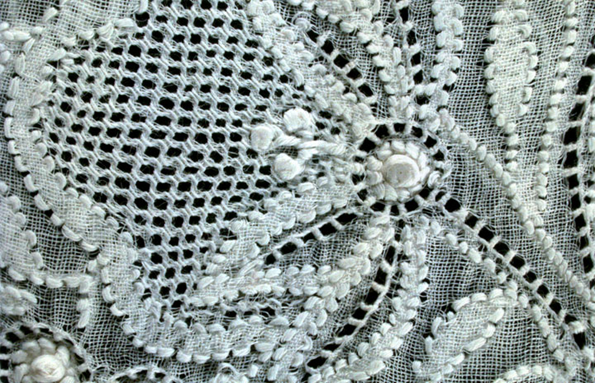Indian Handicrafts: A symbol of India’s rich heritage

The best way to protect your culture is by preserving it in artworks and passing it to the next generation. We must be grateful to our exceptionally dexterous artisans, who have kept alive our years’ old culture and art, by creating exceptional handicrafts which are now globally recognized and appreciated.
This article talks about the five most popular handicrafts of India.
- Bidriware Metal Handicraft

Bidriware is a metal handicraft of Bidar, Karnataka. The origin of this art is attributed to the Bahamani sultans who ruled the region during the 14th and 15th centuries. The beautiful inlay work of gold and silver on black alloyed metal is a perfect example of beauty in contrast.
Bidriware is manufactured from an alloy of copper and zinc (1:16) by casting. The craftsman use chisels to engrave the design on the article. Silver is converted into fine wires or flattened strips and hammered or inlaid into the grooves. A special type of soil that is present in the unlit portion of the Bidar fort is mixed with ammonium chloride, and water to produce a paste that is rubbed onto a heated Bidri surface. The paste selectively darkens the body while it has no effect on the silver inlay.
2. Cane and Bamboo Handicrafts:

Cane and Bamboo crafts make a vital part of the north Indian economy. This craft is a primary source of income for the local tribes. The authenticity and variety in the craft exhibit artisans’ skill in working with cane and bamboo. Though the history of this handicraft cannot be traced, it is believed to have existed since the dawn of civilization.
The craftsman uses numerous types of cuts and chisels to make bamboo and cane strips and then binds them artistically to bring out an amazingly intricate structure.
They make things like trays, unique furniture, bamboo/cane mats, decorative lamp shades, stools, hand fans, baskets, handbags, jewelry, etc. which appeal to people of every class.
3. Carpet Weaving

Carpet weaving was introduced in India by Mughal emperor Akbar in 1580A.D. He called some of the finest carpet weavers to India and established carpet weaving centers at Agra, Delhi, and Lahore to facilitate the production of Persian-style carpets. With time the Persian style of carpet making blends with the Indian art to recreate unique patterns and design. The art spread over the whole subcontinent with each area having its own style. The carpet industry developed more in north India and major carpet industry centers are in Kashmir, Jaipur, and Bhadhoi.
Type of carpet based on the techniques involved:
- Hand-knotted carpets

These carpets are woven completely by hand on a special loom. These have a flatter pile and less texture. Knotted rug requires impeccable skill and inexhaustible patience to get complete. The quality and cost of a hand-knotted rug is determined by the number of knots per square inch.
Bhadhoi city of Uttar Pradesh is the largest centre for hand-knotted carpet industries in India and is known as ‘Carpet City’.
- Hand-tufted carpets

These carpets are made partially by hand and partially by a mechanized tool. A hand-tufted carpet is made by punching strands of wool into a canvas that is stretched on a frame, with the help of a hand-operated tool. After piling with wool the carpet is removed from the frame. These carpets have some sort of backing to hold the tufts in place. Often a scrim fabric is glued to the back. To complete the carpet a fringe is added by either sewing or gluing it on.
4. Chikankari

Chikankari is one of the most ancient and traditional arts of embroidery, which finds its roots in the city of Nawabs. It is a very delicate and shadow work type of embroidery. The simple and precise handwork on the garment gives it a very subtle and classy feel.
Noor Jahan the wife of the Mughal emperor Jahangir, introduced the Persian art in India in the 17th century. With time the Chikankari artisans spread all over India as Lucknow the main centre.
Initially, the embroidery was done using white yarn on colourless muslins cloths known as ‘tanzeb’. However, today georgette, chiffon, cotton, and other fine fabrics are also being used.
Methods of Chikankari work
The stitches used in the Chikankari work of Lucknow are basically of three categories, namely
● Flat stitches( subtle stitches that remain close to the fabric)
● Embossed stitches( they give a grainy appearance)
● Jali work( created by thread tension, it gives a delicate effect)
The steps involved in Chikankari work are cutting, stitching, printing, embroidery, washing, and finishing.
Chikankari is extensively used for designing sarees, kurtis, shirts, and formal kurtas for men.
5. Zardozi

Zardozi is a form of embroidery that has been introduced in India by the Mughal conquerors. ‘Zar’ meaning gold and ‘dozi’ meaning embroidery, refers to the process of using metallic bound threads to sew embellishment on various fabrics. Immensely skilled artisans are involved in making this intricate yet aesthetically pleasing artwork.
Lucknow became the major centre for this art form with numerous micro-enterprises, specific for Lucknow Zardozi. The Geographical Indication Registry has accorded all Zardozi textiles manufactured in Lucknow and its surrounding districts with GI tags. Cities like Hyderabad, Delhi, Agra, Kashmir, Kolkata, Varanasi, and Farrukabad are also known as Zardozi specialty regions.
The basic technique of Zardozi is four-fold:
● Designing: This is the initial stage where the entire design is drawn on a tracing sheet and holes are made along the traced pattern using a needle.
● Tracing: The paper with patterns is placed on a flat table with fabric underneath. A solution of Kerosene and Robin Blue is made and wads of cloth are used to dip in it, which are then wiped against the tracing sheet. This enables the ink from the sheet to sip into the fabric.
● Setting the frame or ‘Adda’: the design imprinted fabric is stretched over a wooden frame using bamboo or wooden spars. It is then stretched out and tightly held to give the cloth a uniform tension. The artisan then sits around this frame to begin the embroidery work.
● Embroidery: A crochet-like needle that is fixed to a wooden stick called ‘Ari’ is used to carry out the embroidery.
● Materials used: Originally zardozi threads made of gold and silver were used to carry out the embroidery but in recent times metal wires made of Copper, and Resham threads are used.
Zardozi embroidery is mainly used in kurtis, salwar, sarees, lehengas, dupattas, wall hangings, etc.
References:
http://www.dsource.in/resource/zardozi-embroidery-allahabad/tools-and-raw-materials
https://www.directcreate.com/craft/bidri-ware
https://www.utsavpedia.com/motifs-embroideries/zardozi-weaving-in-the-shimmers/
https://www.thespruce.com/difference-between-hand-knotted-and-hand-tufted-1391125